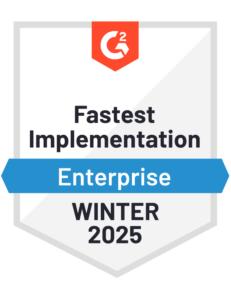Insights For Retaining And Recruiting Finance And Accounting Talent
Blog post
Share
Omar Choucair, CFO, Trintech, has spent 20+ years leading financial and administrative organizations for public and private companies.
By now you’ve likely heard of — and probably even dealt with — the Great Resignation, as many baby boomers retire early and millennials and Gen Zers look for jobs with greater degrees of flexibility and highly competitive compensation packages.
The finance and accounting (F&A) sector has certainly been impacted. In fact, the employee shortage is coming at a time when the need for strong talent in the F&A field is steadily increasing. According to the Bureau of Labor Statistics, the demand for accountants is forecast to grow 7% from 2020 to 2030.
These hiring challenges are reflected in cautious growth expectations across all business verticals, as companies evaluate their resource constraints, carefully determine which projects to undertake and then prioritize the most business-critical of those initiatives to pursue.
In the face of these headwinds, how can firms retain and acquire the talent required in their evolving F&A departments? Technology and employee engagement are key drivers of these initiatives.
Filling Workforce Gaps With Technology
In 2022, I expect automation tech to play an increasingly important role in helping fill the gaps created by the war for talent. Based on the ROI calculators we ask the customers of our financial close software company to fill out, we find many firms can meaningfully reduce their required headcount through implementing software automation.
As competition for skilled employees continues at a fever pitch, increasing compensation packages and benefits will only go so far in meeting many firms’ workforce support needs. Combining a proactive talent acquisition and retention program with critical and strategic investments in technology can help ensure levels of support both now and in the future. In fact, technology investments can also de-risk firms from potential future volatility in workforce availability.
Financial close automation technology plays a central role in preserving institutional knowledge, as well, which is critical for a smooth and efficient transfer of knowledge when employees do move on or retire. In this way, technology not only plays a role in risk mitigation but also in supporting succession planning and productive onboarding.
The Strategic Case For Higher-Value Work
Beyond filling critical hiring gaps, leveraging automation technology can help both existing team members and new hires focus on higher-value work. This enables employees to elevate their skills, engage in more value-add activities and support strategic objectives in more meaningful ways.
Empowering employees to shift their focus from manual, low-value, repetitive tasks to more challenging and strategic responsibilities can help them achieve greater satisfaction from their work. Employee satisfaction, in turn, not only supports the creation of more valuable outputs but also is a key factor in reducing churn.
Placing A Premium On Employee Engagement
Though work-from-home or hybrid models are attractive to employees who enjoy greater flexibility, many workers reported feeling less connected to their employers. Companies will need to make more of an effort to foster a sense of belonging among workers who might not meet regularly in person.
Since so many things can be done virtually, we then need to make sure time spent together in person is worthwhile. For example, our leadership team has been spending some time together in our HQ over the past many months, and we use that time more effectively and thoughtfully than we did in the past. Similarly, we need to make sure employees’ time working from home is truly flexible, allowing them concentrated time to work, as well as the ability to meet the needs of their personal lives.
Diversity, equity and inclusion (DEI) has been a focus for many companies in recruiting, especially over the past couple years. Executives are rethinking their workforces and developing strategies to support attracting and retaining a diverse employee base. But to bring effective change, DEI cannot be seen as a siloed initiative handled by your HR department. One way we’re doing that at our company is through our culture council, which brings leaders together across the organization to ensure we are focused on inclusivity.
Attracting and retaining strong talent can be done, even in the midst of the Great Resignation — but it must be done thoughtfully, made a priority and consistently supported through investments in resources that support employees in the ways that matter most.






